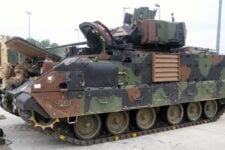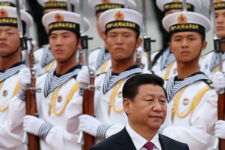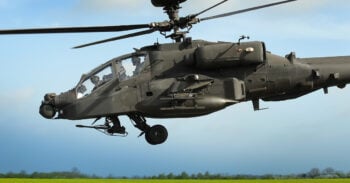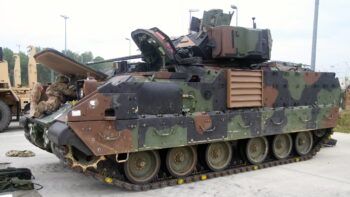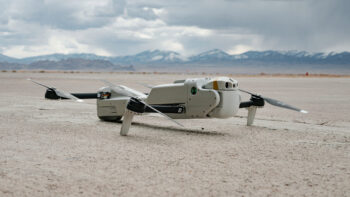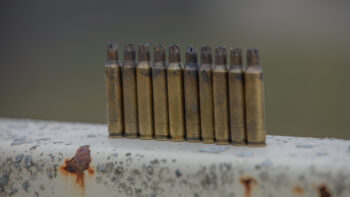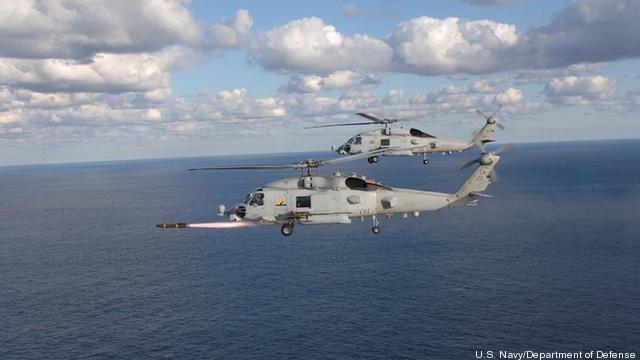
WASHINGTON: India has finalized a $900 million deal with Sikorsky for 24 MH-60R helicopters that will help India’s navy spot and track Chinese submarines, drones and surface ships that are operating more frequently in the Indian Ocean.
The pact was initially approved by the State Department in April 2019, and was finally inked in recent days between the Indian government and Sikorsky, now part of Lockheed Martin. It includes three MH-60R Seahawk maritime aircraft for the Navy and 21 MH-60Rs for other branches of the Indian military.
Infamous for its lengthy procurement timelines, the Indian navy has struggled to replace its aging British Sea King helicopters for more than a decade; they walked away from a previous attempt in 2017 after the MoD scrapped plans to buy 16 S-70B Seahawks from Sikorsky.
The new helicopters will give the Indian military a powerful tool to monitor the seas for the increasing number of Chinese surface ships and submarines, at a time when tensions are again rising between the two countries. In recent days, Indian and Chinese soldiers have engaged in a series of small skirmishes along their border, reigniting old tensions in the region.
“India is a strong naval partner — this high-end capability will significantly enhance its maritime domain awareness and their anti-submarine capability,” said Navy spokesman Capt. Danny Hernandez.
“The MH-60R provides a vital capability in the Indo-Pacific region and equips the Indian Navy with a tremendous capability that is ready for operations immediately upon delivery,” said Tom Kane, director of Sikorsky Naval Helicopter Programs.
Increased Chinese navy activity in the region has India on edge, and the discovery of a dozen Chinese Haiyi, or Sea Wing, underwater drones in the eastern Indian Ocean earlier this year only upped the ante.
In order to maintain its traditional military dominance over the Indian Ocean, New Delhi has for years been one of the world’s largest importers of arms. The United States is inching up the ladder as one of the country’s top defense partners, and is looking to supplant Russia as New Delhi’s main supplier. It’s slow going, however, as the US share is expected to grow 6.2 percent annually through 2023, according to a 2018 study by Avascent, a consulting firm.
In order to get after that, the Obama administration designated India a Major Defense Partner in 2016, a designation that grants New Delhi access to sensitive US defense technologies at a level comparable to NATO allies. The move put pressure on Russia, which had just lost out to the U.S. on a $3 billion deal to Boeing for Apache and Chinook helicopters for which Moscow offered its Mi-28 Havoc and Mi-26 helicopters.
“Russia has lost traction in India—the main long-term recipient of Russian major arms—which has led to a sharp reduction in arms exports,” Alexandra Kuimova, SIPRI Researcher said in a March report.
Despite India’s heavy spending, the industrial might and commitment of China to something close to a blue water navy looms large. India’s “longstanding superiority over China in the Indian Ocean is at risk of slipping away,” a Center for a New American Security report stated earlier this year. “Beijing has enhanced the capability and capacity of the naval forces it can project into the Indian Ocean and pursued overseas military facilities to support a more regular People’s Liberation Army Navy (PLAN) presence there.”
Lockheed Martin has plans to possibly move all future production of the F-16 fighter plane from South Carolina to India if it wins an air force contract there and has already entered into a partnership with Tata to build F-16 wings in India; that work has not yet begun.
Laser weapons and future tanks: European Defense Fund to spend $1.3B on 54 projects
Development of more novel weapon systems includes the second phase launch of the Tactical Advanced Laser Optical Systems (TALOS) project (TALOS-TWO), designed to support a long term target of developing 100 kilowatt-class laser weapons by 2030.
